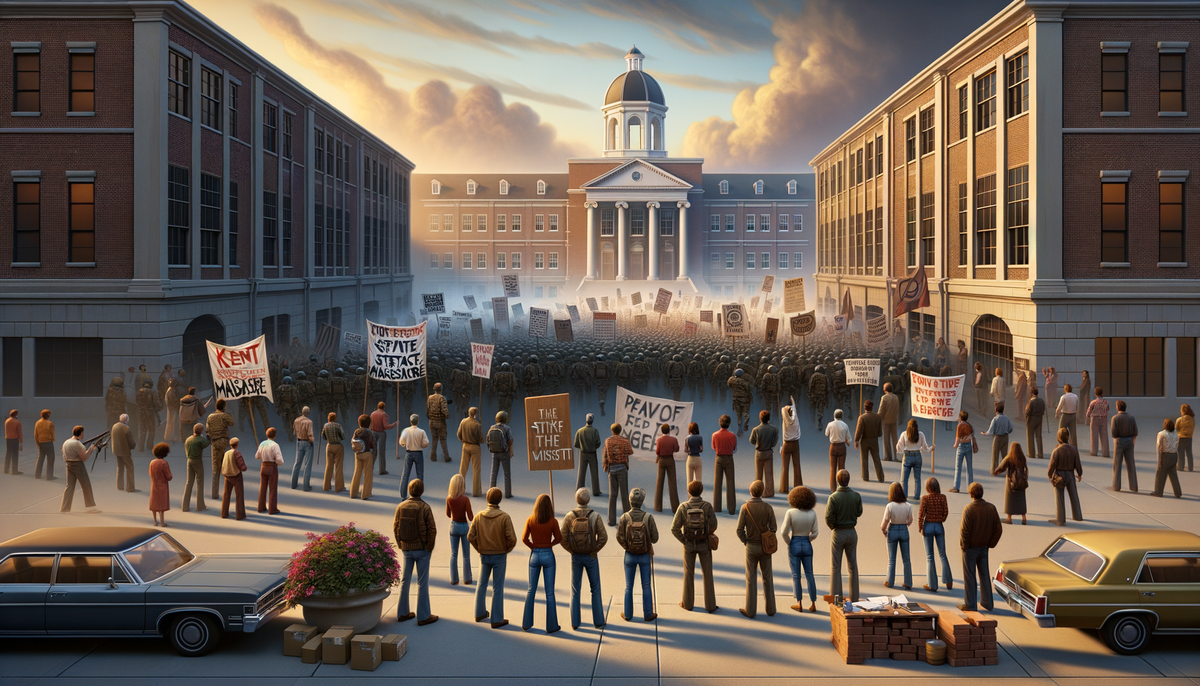Understanding the Kent State Massacre: A Turning Point in American History
Explore the historical significance of the Kent State Massacre and its influence on protest rights and governmental policies.

Understanding the Kent State Massacre: A Turning Point in American History
The Kent State Massacre, also known as the Kent State shootings, marks one of the most pivotal and tragic moments in American history, reflecting the intense societal tensions of the Vietnam War era. On May 4, 1970, at Kent State University in Ohio, the Ohio National Guard opened fire on unarmed college students, resulting in four deaths and nine injuries. This event not only highlighted the stark divisions within American society but also influenced public perception of the Vietnam War and the role of government in domestic protests.
Overview of the Kent State Massacre
The shootings at Kent State University occurred amid growing student unrest against President Richard Nixon’s announcement of the U.S. invasion of Cambodia—seen as an escalation of the Vietnam War. The protest atmosphere that day was fueled by frustration and hopelessness, grounded in years of anti-war activism. Unfortunately, it culminated in a deadly confrontation between students and the National Guard, resulting in four deaths and nine injuries [1][2][3][4][5].
Timeline and Context
On that dark day, thousands of students gathered on campus despite a ban, in defiance of university and local authorities. Tensions had been rising due to the burning of the ROTC building, which brought about a larger presence of the National Guard [1]. At noon, the National Guard, attempting to disband the rally, faced defiance. They fired tear gas into the crowd, yet the wind neutralized its effect. This lethal confrontation, capturing the tragic essence of domestic strife during the Vietnam era, happened under tumultuous conditions [2][5].
The Shooting
The incident unfolded rapidly. As clouds of tear gas dispersed, guardsmen and protesters clashed verbally, with some throwing rocks at soldiers. The National Guardsmen retreated up a hill, briefly paused, and—unexpectedly—turned back to unleash a horrific volley of gunfire into the crowd [1][2]. Of the four students killed, two were mere bystanders, underscoring the senseless violence that indiscriminately affected both activists and passersby [2][4][5].
Aftermath and National Impact
The aftermath was unprecedented, with protests spreading like wildfire across the United States. This marked a profound shift in American public opinion—highlighting concerns about government accountability, force in handling protests, and the moral quagmire of the Vietnam War [4]. Strikes ensued nationwide, with colleges and universities becoming hotbeds of revolution and discourse about dissent against state authority [2][4][5]. While the tragedy inspired immediate action and reflection, no one was held criminally responsible, although guardsmen faced and were acquitted of civil rights charges [2].
Legacy and Historical Significance
Recognized today as a National Historic Landmark, the Kent State site is reverenced for its enduring role in reshaping protest rights and highlighting the relationship between government and its citizens [2]. The Kent State Massacre serves as a sobering reminder of the potential consequences of governmental overreach and the perils of using military force in managing civil protests [4][5].
Key Facts Table
| Element | Description |
|---|---|
| Date | May 4, 1970 |
| Location | Kent State University, Kent, Ohio |
| Perpetrators | Ohio National Guard |
| Casualties | 4 killed, 9 wounded |
| Victims | Kent State University students |
| Context | Protest against Vietnam War, Cambodia invasion |
| Legacy | Sparked nationwide protests, site is a National Historic Landmark [2] |
Notable Points
Often referred to as an act of "state terrorism," the incident at Kent State remains a touchstone in American history, shedding light on the danger posed by a militarized response to civil dissent [2]. Many victims were bystanders, further magnifying the reckless nature of the event [4]. This massacre profoundly shifted public opinion, altering the trajectory of discourse on the Vietnam War and thrusting the nation into a deeper introspection about civil liberties [2][5].
Conclusion
In sum, the Kent State Massacre underscores a vital chapter in American history, marked by its evocation of societal change and reflection. It serves as more than a historical event; it is a narrative cautioning today's and future generations about the fragile balance between protest and authority and the ever-pressing need for restraint and understanding in governance and enforcement [2][4][5].
For professionals and historians focusing on protest rights and government accountability, the Kent State Massacre remains a critical study into the consequences of state actions during periods of civil unrest, providing invaluable lessons in conflict management and civic responsibility.
If you're interested in exploring the extensive impacts and historical contexts of events such as the Kent State Massacre, we invite you to view more expert analyses and commentary through our resources. Follow our latest discussions and insights into significant historical occurrences and see how past lessons continue to inform current socio-political landscapes.




